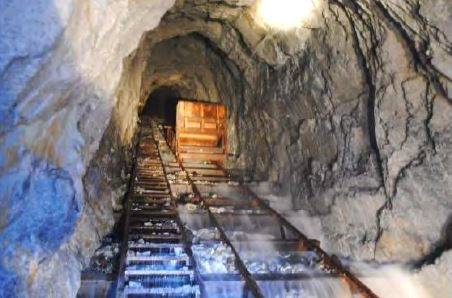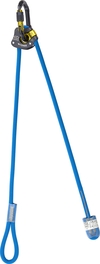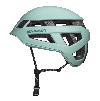The Cogne mines between the past and the future - part 2

 1 / 4
1 / 4 Fondation grand Paradis e Comune di Cogne
Fondation grand Paradis e Comune di Cogne
Click here for the first part The Cogne mines, between the past and the future
"Freedom is not where we have not yet been, but ehere we come from" G. Zagrebelsky
There is a different Italy, made of abandoned places. Too many neglected alpine pastures up the mountains, too many abandoned warehouses, dismantled railways and uninhabited villages, both in the country's north and south. These places are silent witnesses to our recent past, a past that we are no longer capable of holding on to. Places that helped us shape what we are, that now just quietly ask us to be aware of the ties that bind us all together.
The Cogne mine is, in some respects, a part of these places and the discussion regarding its restoration is linked with the identity of the village of Cogne itself, and to the people who live there. Restoration works are also intrinsically linked to doing something good for everyone, with the delicate balance between past and future that every healthy society must deal with.
A landscape formed by memories
Bering this is mind, the question revolves not only around creating a new tourist business – albeit sustainable - but how to work on a "landscape formed by memories" that is capable of reconciling Cogne with its environment and its past.
The Miners Village (ex Anselmetti area) is the site where dormitories, offices and the dining hall were located. Today it is the headquarter of the Fondation Grand Paradis and of the Alpinart exhibition center that includes the small Cogne Mining Museum. The Gran Paradiso National Park Visitors Center is also located here, while future projects include a youth hostel and a Graduate School.
The restoration process of the mines could start from here, be restoring the mills, the enrichment plants, the railway station and the entire 300m long tunnel used by the train as it travelled to Acque Fredde filled with minerals.
The existing museum – which also includes a priceless 1930's film by Marco Elter (Franz’s brother) – will be enlarged and will provide visitors with an historic overview of the mines, highlighting the milestones thanks to a multi-media circuit.
All the buildings in the area are quite well maintained and their restoration should be someway affordable. At the moment, Fintecna Spa (now merged in Cassa Depositi e Prestiti) is the owner all the compounds and the company has been doing all the necessary works to be compliant with the security standards (for a total amount of 6 millions Euros), and also with a view to a touristic use of the place, once the local public administration will be the new owner.
According to the existing project, tourists will start their visit form the arrival station of the minerals, a beautiful wooden building in good state of repair. Inside, they will be able to see the bucks coming from Costa del Pino, while outside they can visit the cable car station.
Visiting the mills, the magnetic separators and the annexed rooms will be one of the most interesting experience for tourists. Here, you can still see minerals on the conveyors belts and in the sieves. Recently, during a visit, I could have a look through the broken glass of a windows and it was like time suddenly stopped. I casted a glance at the thin lines of a spider’s web and suddenly they became my frame for a personal black and white movie, in a silent, suspended time.
Storytelling about ruins
It’s almost impossible not to mention here the current literature about ruins and about the effects that they produce on the human soul. I will just report a quote of the Italian historic Antonella Tarpino, who in her most recent work "Spaesati" (4) says: "The bricked up time in the landscape of the past - almost hitched on in its ruffled stones - puts in contact the histories of every single person. It’s a common good (…) that we can look at in a problematic way, in the eternal conflict between past and present. Both of them, we could finally say, equally mediocre."
Taking all this into consideration, a restoration work would just be the first step to start an open dialogue with the past. Not necessarily a silent dialogue: through multimedia supports it will be possible to reproduce voices, images and sounds of the life in the mine. And this will be especially impressing if tourists are able to descend along one of the wells getting in connection the mills with the gallery. This should be relatively easy, given the good state of the gallery and of the consistency of the rock.
The project will also rethink the access ways to the Miners Village. At the moment the area is only accessible by car and the park is quite small, but the local administration is thinking about setting up a surface sustainable transport based on sloping elevators from the Revettaz place to the railway station inside Miners Village.
In the hearth of the mountain, walking along the miners trails
The Costa del Pino and Colonna compounds will be aim of a long-run restoration work. The Italian architect Giò Gozzi (5) designed two alternative itineraries connecting each other the two places. The first path will run into the galleries, in the heart of the mountain, using the small train and the skip – a big sloping elevator able to cover an altitude gap of 400 in a few minutes. The second itinerary will travel along the miners trails, recalling the ancient, wearing ascents: a place where natural elements and the signs of the human work will be able to talk each other again.
The Austrian Writer Thomas Bernhard (6) invites us to "tell the story of our ruins before they become just remains". I think that a work of restoration - a work that everybody wants to be done now more than ever– should finally be a storytelling work, giving voice to the questions that all the abandoned places raise and trying to find the right balance between memory and future.
by Simonetta Radice
4) Antonella Tarpino, "Spaesati", Torino, Giulio Einaudi Editore, 2012 pag. 35
5) Giò Gozzi, "Cogne, Miniere e Minatori", Milano, FBE Edizioni, 2009 pag 90 e seguenti
6) In: Antonella Tarpino, "Spaesati", Torino, Giulio Einaudi Editore, 2012 pag. 35
08/10/2013 - The Cogne mines, between the past and the future - part 1



 Copia link
Copia link
























